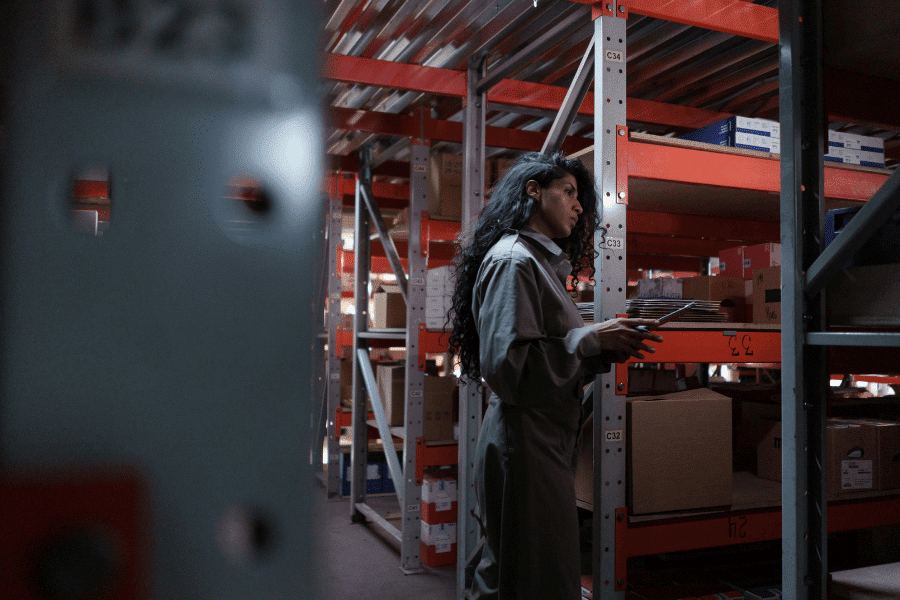Related Resources
Public transit networks are the backbone of urban mobility, providing millions of people with affordable, accessible, and sustainable transportation every day. Yet, as cities grow and travel patterns evolve, traditional fixed-route scheduling often struggles to keep pace with passenger needs and operational realities.
Dynamic route optimisation — powered by predictive analytics, artificial intelligence (AI), and real-time data — offers a transformative approach. It enables transit agencies to adjust routes and schedules based on live conditions, passenger demand, and predictive modelling, ensuring more efficient services, reduced wait times, and better resource utilisation.
For transit operators, the move from static to dynamic routing is not just an operational improvement — it is a strategic shift towards more adaptive, resilient, and customer-focused transportation systems.
Why Public Transit Needs Dynamic Route Optimisation
Fixed-route systems have been the foundation of public transit for decades. While they offer predictability, they are often slow to adapt to changes such as:
- Sudden surges or drops in passenger demand
- Traffic congestion or road closures
- Seasonal variations in travel patterns
- Special events that alter ridership flows
- Weather conditions affecting travel behaviour
Without flexibility, agencies risk inefficiencies — buses running empty on certain routes while others face overcrowding, or vehicles stuck in traffic instead of being redeployed to higher-demand areas.
Dynamic route optimisation addresses these issues by using data-driven insights to adjust routing decisions in near real time, aligning supply with actual demand and network conditions.
What is Dynamic Route Optimisation?
Dynamic route optimisation is the process of continually adjusting transit routes, schedules, and vehicle allocations based on real-time and predicted conditions. It integrates:
- Live operational data: GPS tracking, vehicle occupancy sensors, and traffic monitoring
- Historical demand patterns: Long-term ridership trends, peak hours, and seasonal variations
- Predictive modelling: Forecasting demand based on weather, events, and socio-economic factors
- Automated decision-making: AI-driven systems that propose or implement changes instantly
Unlike traditional route planning — which might be updated quarterly or annually — dynamic optimisation can adjust service every hour, or even every few minutes, depending on network needs.
The Technology Behind Dynamic Routing
Several core technologies enable transit agencies to implement dynamic route optimisation effectively.
Real-Time Data Collection
Onboard sensors, GPS devices, and fare collection systems provide up-to-the-minute information on passenger loads, vehicle locations, and service delays.
Predictive Analytics
Machine learning models use historical and real-time data to forecast future demand spikes or bottlenecks. For example, if rain is expected during evening rush hour, models may predict increased bus usage and recommend additional vehicles for specific routes.
Automated Dispatch Systems
AI-powered platforms can recommend route changes or vehicle reassignments and send updated instructions directly to drivers and onboard systems.
Passenger Information Systems
Dynamic routing requires transparent communication. Mobile apps, station displays, and onboard announcements keep passengers informed of route changes or service updates in real time.
Key Benefits for Public Transit Agencies
Dynamic route optimisation offers a wide range of operational and passenger benefits.
Improved Resource Utilisation
By matching vehicle deployment to actual demand, agencies reduce fuel consumption, wear and tear, and driver overtime, while ensuring that capacity is available where it's most needed.
Reduced Wait Times and Overcrowding
Dynamic adjustments prevent long queues and overcrowded vehicles by sending extra capacity to busy routes or reassigning underutilised buses.
Increased Operational Resilience
When unexpected disruptions occur — such as accidents or sudden road closures — dynamic routing enables rapid adjustments to maintain service continuity.
Enhanced Passenger Satisfaction
Shorter waits, less crowding, and timely service updates build trust and encourage more people to use public transit.
Sustainability Gains
By reducing unnecessary mileage and idling, dynamic routing contributes to lower emissions and supports city climate goals.
Overcoming Implementation Challenges
While the benefits are clear, deploying dynamic route optimisation requires careful planning and investment.
Data Quality and Integration
Dynamic routing depends on accurate, up-to-date data. Inconsistent or incomplete data from sensors or legacy systems can undermine predictions and decisions.
Technological Infrastructure
Agencies may need to upgrade vehicle tracking systems, passenger counting devices, and backend analytics platforms to enable real-time optimisation.
Workforce Training and Change Management
Drivers, dispatchers, and operations staff need to adapt to new workflows and tools. Building trust in automated recommendations is essential for adoption.
Passenger Communication
Frequent route changes require clear, timely communication to passengers to avoid confusion or dissatisfaction.
Best Practices for Successful Deployment
Agencies aiming to implement dynamic route optimisation can increase success rates by following proven best practices.
Start with Pilot Projects
Begin with high-demand routes or areas with known congestion issues. Measure impact on efficiency, cost savings, and passenger satisfaction before scaling.
Focus on Data Accuracy
Invest in reliable tracking, counting, and monitoring systems. Accurate data underpins all predictive and real-time decision-making.
Involve Stakeholders Early
Engage drivers, passenger advocacy groups, and municipal planners in the planning phase to ensure buy-in and address operational concerns.
Integrate Passenger Feedback
Use surveys, app reviews, and service reports to refine optimisation strategies and maintain a passenger-focused approach.
Maintain Transparency
Clearly communicate the benefits of dynamic routing, such as reduced wait times and improved reliability, to build public trust.
The Role of Predictive Analytics in Dynamic Routing
While real-time data addresses immediate needs, predictive analytics allows agencies to anticipate issues before they occur.
For example, a predictive model might forecast that ridership on certain routes will increase by 15% during a local festival weekend. This insight allows planners to pre-position extra buses and drivers, reducing last-minute stress and service gaps.
Predictive analytics also helps optimise long-term planning by identifying consistent demand shifts, such as growing commuter populations in specific suburbs, informing permanent route changes or fleet expansions.
The Future of Dynamic Route Optimisation
As AI models become more sophisticated and connected infrastructure expands, dynamic routing will evolve further.
Future developments may include:
- Autonomous Vehicles: Dynamic optimisation integrated with driverless buses for even faster deployment and re-routing.
- Integrated Mobility Platforms: Coordinating public transit with ride-sharing, bike rentals, and micro-mobility services for seamless multimodal journeys.
- Self-Learning Systems: Algorithms that adapt to city-specific patterns over time, continuously refining route efficiency.
- Environmental Optimisation: Routing that not only meets demand but also minimises emissions in sensitive zones.
Conclusion
Dynamic route optimisation represents a critical step in transforming public transit into a more adaptive, efficient, and customer-focused service. By leveraging real-time data, predictive analytics, and automated decision-making, transit agencies can move beyond fixed-route limitations—reducing costs, improving passenger experiences, and contributing to sustainability goals.
For cities aiming to encourage public transit use and reduce congestion, the adoption of dynamic routing is not just an operational upgrade — it's a cornerstone of future-ready urban mobility. Agencies that invest now in building the necessary infrastructure, data systems, and cultural readiness will be well-positioned to deliver reliable, efficient, and environmentally responsible transit for decades to come.




